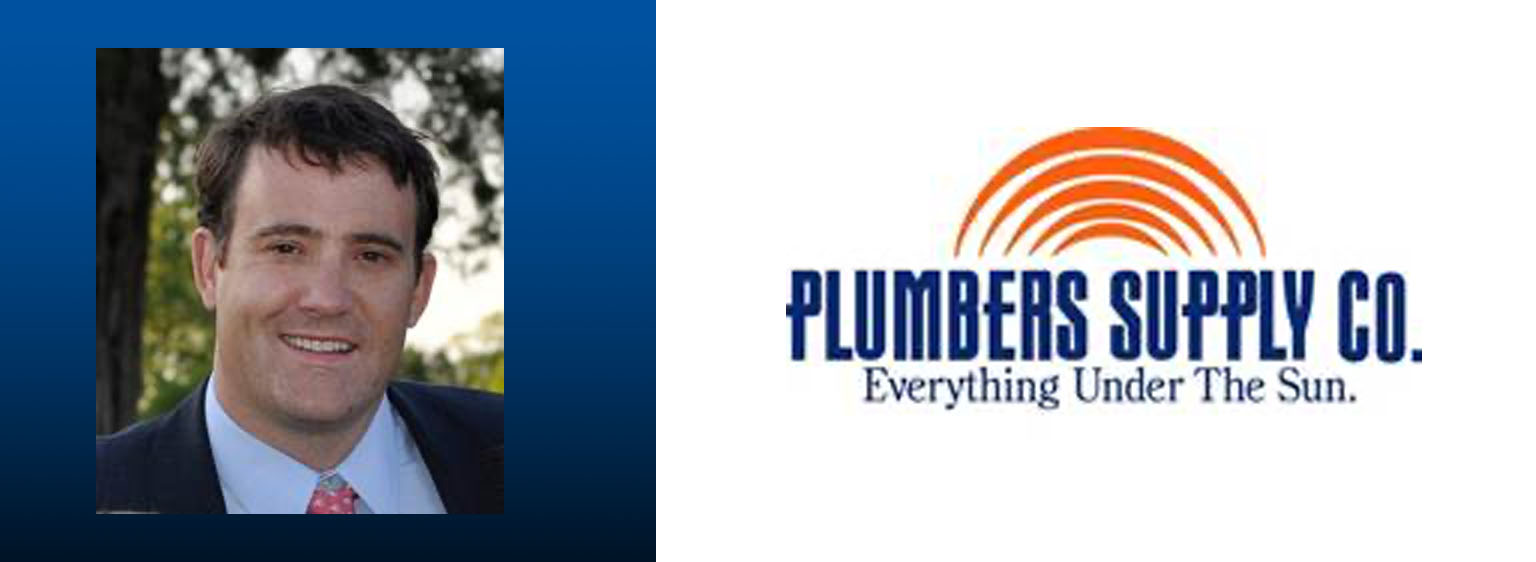What follows are perspectives from Jay Johnson, president of family-owned Plumbers Supply Company in Louisville, Ky. Stocking 45,000 different items, the company lives up to its motto, “Everything Under the Sun.” It serves plumbing, fire protection, and HVAC contractors and industrial/institutional customers from 13 locations in Kentucky and Indiana. The headquarters location in Louisville—the original building dates back to 1898—has three floors with 31 rooms and zones, plus 11 additional storage locations outside. Employing 100 people in Louisville, and 6-30 people at each of its branch locations Plumbers Supply is almost two years into a lean transformation. They’ve made dramatic progress, and many opportunities remain.
 |
 |
LEI: Can you describe the major business challenges that lean has helped you address?
Johnson: Before lean every day was a firefight. We had customer delivery issues, misplaced parts, damaged parts, and missing inventory. We have so many transactions and products coming in through receiving and going out as customer orders or transfers to our other branches, there’s a lot of room for major variances.
Our workload really fluctuates wildly. I look at other warehouse operations and they pick orders over a defined period of time, then they’re loading common carriers or their own truck lines. They’ve got a very steady work flow. We cannot predict how many will-call phone orders will come in, how many customers will show up at the counter, or how many customers will go through our drive-through service. Not only are our customers showing up at intermittent times, we typically do 10-15 same-day deliveries when customers need something within one to four hours. Coordinating the fluctuating demand has always been our challenge and continues to be our major challenge.
Before lean there was little or no time for managers to spend on creating a competitive lead in our business, or on improvement projects. The projects we did manage to do didn’t have a structure to support them. The visual is a sandcastle on the beach. As the waves are coming up and the wind is blowing the sand and drying it out, you constantly have to pat the sand back in, and add water.
The walkabout gives people a security blanket that if something hits the fan today, they’ll have the president of the company and other key people in there tomorrow.
We were building sandcastles, then walking on to the next improvement project. A week, a month, or a year later we’d go back and realize everything that had been improved was in a state of disrepair. We were spending all of these resources trying to jump ahead, and improve an area, and not spending the time maintaining.
Another challenge, prior to lean, was the speed of decision making. An issue would be pushed up two layers, wait until myself or someone else at my level could gather the facts, figure out if we had all the information needed, understand the issue, and make a decision. All of that would take a day to five days to a week, only to then discover that it wasn’t a real issue and that things had changed since the initial request.
LEI: What did you have to change about the way you manage and lead the organization in order to get results?
Johnson: I had to do the work myself. I couldn’t just come up with a strategic vision and delegate out the responsibility and action steps. Our senior leadership team—the four of us—participated in the first kaizen, and we participate in every new type of kaizen (for example, 5S, standard work, problem solving, team leader 1, team leader 2, manager pyramid, pull) before we ask anyone else to do it. That allowed me to speed up my learning and opened my eyes.
We started the management walkabout process immediately after the first kaizen workshop. That meant I had to dedicate an hour and a half to two hours every day just to visit each area. Our CFO, and our head of operations, had to dedicate the time as well. That’s eliminated all of the delay in our decision making. The further away from the work you are, the less informed and poorer any decision will be. The closer that you can get to the work, the quicker a decision will happen and, in our experience, the more appropriate it will be.
In the past we would delegate actions and communicate plans and strategy and projects through the traditional methods of sitting in conference rooms, discussing them, and following up by e-mail. Everything we’ve implemented through lean we’ve spent all of our time going to the work.
That’s been a major change for me, learning how to communicate not as a typical executive, but going to the work. As we train the next level, and have them lead workshops, we don’t just follow up with them and ask how it went; we actually go and observe and do the walkthrough.
LEI: Have you found it necessary to make any changes in your organizational structure?
Johnson: Through the process of defining a model area, we’ve shifted resources at team leader one and two levels. Our controller has leaned herself out of us needing a full-time controller. She’s now heading up our improvement team.
In year two the struggle has been having the resources and talent after kaizens are done to do some of the follow-up work, having the structure to maintain and continue the improvements that we’ve put in place. We’re still getting things done but the speed just is not at the level that I’d like to see. That’s why we need dedicated resources to focus on it full time, especially as we look at our 12 other branches where they have even more limited resources.
LEI: What behaviors (by managers and associates) have you found that are important to drive the lean transformation?
Johnson: The most important is observation. When we struggle with implementation, not following the standard work for example, you know the instructions are too hard to follow, or it’s not visual. But if the team leader throws up his hands and says, “It’s a lack of focus. They didn’t understand. It won’t happen again,” I know they do not understand the work because they haven’t observed it.
Trying to convert the kaizen workshop process and mentality into daily work is a challenge. If a manager has that behavior, when they have an issue and immediately go to observe the work, I know that’s going to get to the root cause. But it’s not something that comes naturally.
Our CFO, for example, was having a lot of difficulty with the implementation of our demand forecasting project. He was constantly struggling, sitting in meetings once a week, going through the next phase of implementation. He’d hear feedback from the buyers about how the data is wrong, that the system is not working, that it’s just too complicated. And the implementation team was saying they weren’t getting any feedback or data to show what’s wrong.
In that case we’ve gone and observed the buyers doing their work. After spending eight weeks observing these processes for an hour a day, it becomes clear what the next steps are. That observation process isn’t taught in traditional management. I think it’s a game changer. If you can get your leaders to follow that behavior and follow the simple tenets of lean, you will improve at a faster rate than the competition.
LEI: As a senior manager, what could a middle manager have done to convince you to make the leap to lean thinking sooner?
Johnson: That wasn’t how we introduced it, obviously. But as a company president or senior manager, we want to see how something will impact the business. Generally, a lot of business leaders are pretty stuck in the mud. They have to see the potential.
I was fortunate to be able to see lean and the gemba at Lantech. I was blown away by—selfishly—how it could impact my efficiency as a manager. To be able to work more at the strategic level, but also have a much better hand on the pulse of the business on a daily basis by forcing decision making closer to the work.
As a senior manager, 5S would have been tough to start with. 5S creates a lot of feelings around interfering with personal space. “I’m doing a good job. Why do you have to clean up my space and put tape all over my desk.”
When I walked with Jim Lancaster [CEO of Lantech] around his plant, and saw the decisions being made, and the fact that Jim had the rest of the afternoon to improve and work on strategic planning—all of the things that he couldn’t spend as much time doing in the past because he was firefighting and getting bombarded at his desk with issues and problems—I knew the gemba walk was the place to start.
LEI: Why do you think the daily management walk is so powerful?
Johnson: The walkabout gives people a security blanket that if something hits the fan today, they’ll have the president of the company and other key people in there tomorrow, and we’ll be able to address the issue. A decision can be made on the spot. And they don’t have to worry about bothering me or bringing the information up to me. Or maybe just put the problem under the table and hope it will go away.
From a president and CEO’s perspective, it eliminates the “gotta minute” meetings in my life. It level loads my time and the demands on my time.
LEI: How do you connect your lean efforts to your company’s business strategy and financial objectives?
Johnson: We developed our core values as a team to understand what we are, not necessarily what we want to be. We came up with those and it turns out that three of them are really tied to lean.
The first is continuous improvement, or improving at a faster rate than our competition. That’s something that we felt we’ve always been doing and have valued. The second is quality in everything we do, and that’s a key tenet of lean. Third is our people. We have a strong culture of growing and promoting people from within. Most of our managers started at a lower level in the company. There’s a lot of expertise required with the products that we offer that’s unique to our industry, so it’s difficult to go out and hire an outside sales person and have them be effective if they were selling telecom a month ago for example.
We don’t tie lean to anything related to financial performance. We tie it mostly to leadership development and quality improvement. Probably the most profound metric-related lesson that’s come out of lean is the concept of focusing on the customer.
Traditional wholesalers calculate service levels based on a line-item fill rate. During the walkabout review process, we discovered how one of our departments was having what they felt were service failures in terms of order fulfillment. We measured the issue on the walkabout board for a month. Then we completely changed how we measure service performance at the department, branch and company levels to a 100% complete order fill rate. On a line-item level we were doing great. We were well above the industry benchmarks, but our customers were saying it wasn’t good enough. And they were right, and we were able to focus on improving particular categories of product.
You may be interested in …



